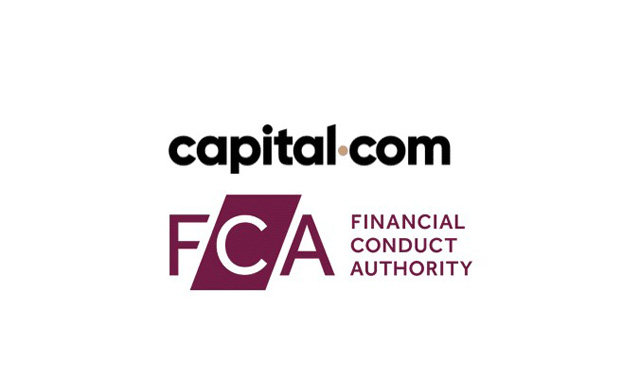Gold has an enduring appeal to investors and traders as a store of value, and in 2024’s complex market environment all investors should consider having gold in their portfolio.

Here are the 3 steps to get started trading or investing in gold:
| 1. Select the asset type you want to buy | Choose between buying gold itself, gold ETFs (exchange traded funds), futures contracts of options. |
| 2. Make a trading plan | Decide whether you would like to trade short term, or invest for the long term, and how you are going to manage the risk. |
| 3. Start trading! | Open an account with a broker if you don’t already have one |
Select Your Gold Asset Type
Gold bullion – physical gold, in the form of coins and bars, is commonly used as a store of value by investors and banks. However, it is expensive to keep and also has insurance requirements which may not make it the best way to invest or trade in gold.
Spot gold – the spot price of gold is the cost to buy it upfront (or on the spot). It is usually the price of one troy ounce of gold. Trading spot gold means you do not take ownership of the metal itself, so it is a popular way of getting exposure without the risk of having to store the gold.
Gold Stocks – Gold stocks give you indirect exposure to gold by investing in many different elements of the gold industry, from mining, production, funding and sales. Note that gold stocks do not always move in the same way as bullion because many other factors drive the price of the shares.
Gold ETFs – ETFs (Exchange traded funds) track the movement of a basket of shares in publicly traded companies involved in the gold industry, including gold mining, production and refining. This gives you much wider exposure than you get from a single position.
Gold futures – Futures contracts enable you to set a price at which you will exchange gold on a set date in the future. You will be obliged to settle the contract at the agreed price, even if it means you lose money, so there is a risk if your prediction of how the gold price moves turns out to be wrong.
Gold options – Option contracts work in a similar way to futures, but you don’t have the obligation to execute the trade on the settlement date if the price has moved against you.
Make a Trading Plan
Start by doing your research. You need to understand how supply and demand determines the price of gold. Many factors go into the supply and demand for gold, including:
Global demand – Gold is used for a variety of reasons worldwide, including jewelry, technology and as a store of value. The demand for gold increases every year, which drives up the price.
Mining production – It is estimated that most of the world’s gold supply has already been dug up. The rate of which mining companies produce gold is declining. If supply continues to fall while demand rises, the price of gold will rise.
Economic issues – Interest rates tend to affect the price of gold; when they are high, gold’s price falls because investors switch to stocks and other assets that will earn them capital. Conversely, when interest rates are low, the price of gold rises as investors worried by economic uncertainty turn to gold as a safe haven. Similarly, the relationship between the U.S. dollar and gold means that when the dollar falls, investors often rush to buy gold, pushing up the price, and vice versa.
Political Instability – Gold is often seen as a safe haven investment in times of political uncertainty or financial stress because it tends to retain its value when other markets fall, and gold is often used as a hedging tool against inflation or currency devaluation.
Once you understand what affects the movement of the gold price, decide whether you want to invest in gold for the long term, or trade on the short term.
| Reasons to trade gold: | Reasons to invest in gold: |
| To speculate on the price of gold rising or falling | To buy and sell gold stocks and ETFs |
| To take shorter-term positions on gold | To focus on longer-term growth |
| To leverage your exposure | To build a diversified portfolio |
| To hedge your portfolio | To take ownership of the underlying asset |
| To trade without owning the underlying asset | To gain voting rights and dividends (if paid) |
As part of your trading plan you need to understand risk management. While it is to be hoped that all your investments and trades are successful, they won’t necessarily all come good so you need to balance potential profits against risks and include mitigation of risk in your plan. This could include limiting exposure on each trade, use of stop losses, and hedging against losses.
Start Trading
Whatever trading strategy you decide on, you should research brokers and trading platforms to find the right one for you. Choose a broker that is regulated by a reputable authority and that offers you the platform and tools that meet your needs, and offers the gold asset you are interested in trading.
The fees and commissions charged by different brokers varies, and high fees can eat into your profits over time.
It’s important to carefully research the broker before opening an account and read the terms and conditions carefully to understand the risks and costs involved.
Buy and sell Gold CFDs with Plus500 in just 5 steps:
1. Explore what shifts the gold price
2. Learn about gold trading in the Trading Academy
3. Open and verify your Plus500 account
4. Develop your trading strategy
5. Execute your first trade on gold
80% of retail investor accounts lose money when trading CFDs with this provider.
FAQs
1. Why should I trade/invest in gold?
Many people consider gold a safe-haven asset, which means its value tends to remain or appreciate during market volatility or times of economic uncertainty. It is therefore seen as a hedge against inflation as well as a way to diversify a portfolio.
2. How do I buy physical gold?
Gold can be bought in the form of coins or bars. You purchase these from a precious metals dealer, a bank or an online retailer. Before you make your purchase you should do some research to make sure the seller is reputable. You can also buy gold jewelry or other items from your local jewelry store or from a pawn shop. However, be aware that as well as the actual value of the gold you may be paying a premium for the craftsmanship of the item.
3. How do I buy gold ETFs?
An ETF is an Exchange-Traded Fund and it allows you to invest in gold without owning any physical gold. You buy shares in an ETF in the same way as buying equities; they are traded on stock exchanges and you buy them through your broker.
4. How do I buy stocks in gold mining companies?
Investing in companies that mine for gold is a way to take advantage of gold price movements but it is more risky than buying physical gold or a gold ETF. However, gold mining stocks can potentially offer higher returns. Always do your research before buying stocks in gold mining companies.
5. How do I trade in gold futures?
Futures allow you to take out a contract for the future delivery of an asset – in this case gold – at a determined price. This is riskier than other ways to trade gold because of the volatility of the gold price. Many brokers offer a platform to trade in futures contracts.
Note that when buying any financial asset, it’s important to do your research and only invest money you can afford to lose.
The information provided in this article is for informational purposes only and should not be construed as financial, investment, or professional advice. The views expressed are those of the author and do not necessarily reflect the opinions or recommendations of any organizations or individuals mentioned. Always consult with a qualified financial advisor or other professionals before making any financial decisions. The author and publisher are not responsible for any actions taken based on the content provided.


 Hot Features
Hot Features













